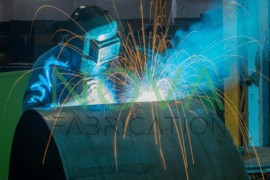If you were to pluck a stranger from the street, sit that person down, and ask them to rattle-off a list of famous instrument makers, they might begin by listing famous guitar manufacturers and piano builders (after looking at you very oddly and protecting their wallet and organs). If you were to then ask that person to name an individual famous for crafting instruments, chances are that they will name-drop Antonio Stradivari—probably the greatest violin maker who has ever lived.

For the past three centuries, violin makers the world-over have been trying to recreate Stradivari’s celebrated instruments and to recreate the sound that master violinists have lusted over since this Nation was a colony. No one has done it, and many will argue that no one has come close. The 3D-printed violin that you see here is not even a contender—but we still think it’s pretty awesome!

German manufacturer EOS certainly flexed its muscles by attempting to replicate one of Antonio Stradivari’s 300+ year-old Stradivarius violins in 3D-printed form, and frankly, it seems that they did a pretty solid job, for a first-go. While the instrument itself is reportedly one-third heavier than its authentic counterpart, and is lacking in the upper-registers, it still remains a surprisingly resonant and sonorous, playable violin—albeit, a far-cry from the real McCoy.

The instrument is primarily composed of EOS’s proprietary EOS PEEK HP3, a semi-crystalline polyaryletherketone thermoplastic which is very stiff and strong. This is a material generally used for aerospace applications, but a substance bearing properties—and even aesthetic values—which lent themselves well to the strict stress and density demands required for crafting a violin. The instrument was assembled by a luthier, who added the non-printed tuners, peg-box and strings.

Many experts claim that the seemingly irreproducible sound of a genuine Stradivarius violin comes from the select spruce woods that comprise these instruments’ contoured tops. Some argue that the trees which bequeathed the wood for these tops had suffered a mini ice age and therefore bore a tighter grain. Others exclaim that a long-lost varnish recipe is responsible for the soul-gripping tone of the Strad. No one is entirely sure.


In any case, if Stradivari himself were alive today, he would undoubtedly have a few things to say to the counterfeiters that have stumbled in his wake, and to the scientists who have tried to unlock his enigmatic analog secrets. But if he were to have the chance to examine the 3D-printed “replica” of his work, we can only imagine what he might think!
(Images via Nate Lanxon and WIRED UK)






